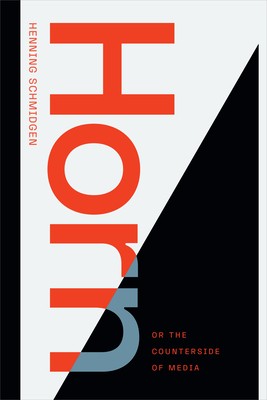
- We will send in 10–14 business days.
- Author: Henning Schmidgen
- Publisher: Duke University Press
- ISBN-10: 1478017724
- ISBN-13: 9781478017721
- Format: 15 x 22.9 x 2.3 cm, softcover
- Language: English
- SAVE -10% with code: EXTRA
Reviews
Description
We regularly touch and handle media devices. At the same time, media devices such as body scanners, car seat pressure sensors, and smart phones scan and touch us. In Horn, Henning Schmidgen reflects on the bidirectional nature of touch and the ways in which surfaces constitute sites of mediation between interior and exterior. Schmidgen uses the concept of "horn"--whether manifested as a rhinoceros horn or a musical instrument--to stand for both natural substances and artificial objects as spaces of tactility. He enters into creative dialogue with artists, scientists, and philosophers, ranging from Salvador DalÃ, William Kentridge, and Rebecca Horn to Sigmund Freud, Walter Benjamin, and Marshall McLuhan, who plumb the complex interplay between tactility and technological and biological surfaces. Whether analyzing how Dalà conceived of images as tactile entities during his "rhinoceros phase" or examining the problem of tactility in Thomas Pynchon's The Crying of Lot 49, Schmidgen reconfigures understandings of the dynamic phenomena of touch in media.
EXTRA 10 % discount with code: EXTRA
The promotion ends in 16d.20:50:26
The discount code is valid when purchasing from 10 €. Discounts do not stack.
- Author: Henning Schmidgen
- Publisher: Duke University Press
- ISBN-10: 1478017724
- ISBN-13: 9781478017721
- Format: 15 x 22.9 x 2.3 cm, softcover
- Language: English English
We regularly touch and handle media devices. At the same time, media devices such as body scanners, car seat pressure sensors, and smart phones scan and touch us. In Horn, Henning Schmidgen reflects on the bidirectional nature of touch and the ways in which surfaces constitute sites of mediation between interior and exterior. Schmidgen uses the concept of "horn"--whether manifested as a rhinoceros horn or a musical instrument--to stand for both natural substances and artificial objects as spaces of tactility. He enters into creative dialogue with artists, scientists, and philosophers, ranging from Salvador DalÃ, William Kentridge, and Rebecca Horn to Sigmund Freud, Walter Benjamin, and Marshall McLuhan, who plumb the complex interplay between tactility and technological and biological surfaces. Whether analyzing how Dalà conceived of images as tactile entities during his "rhinoceros phase" or examining the problem of tactility in Thomas Pynchon's The Crying of Lot 49, Schmidgen reconfigures understandings of the dynamic phenomena of touch in media.


Reviews